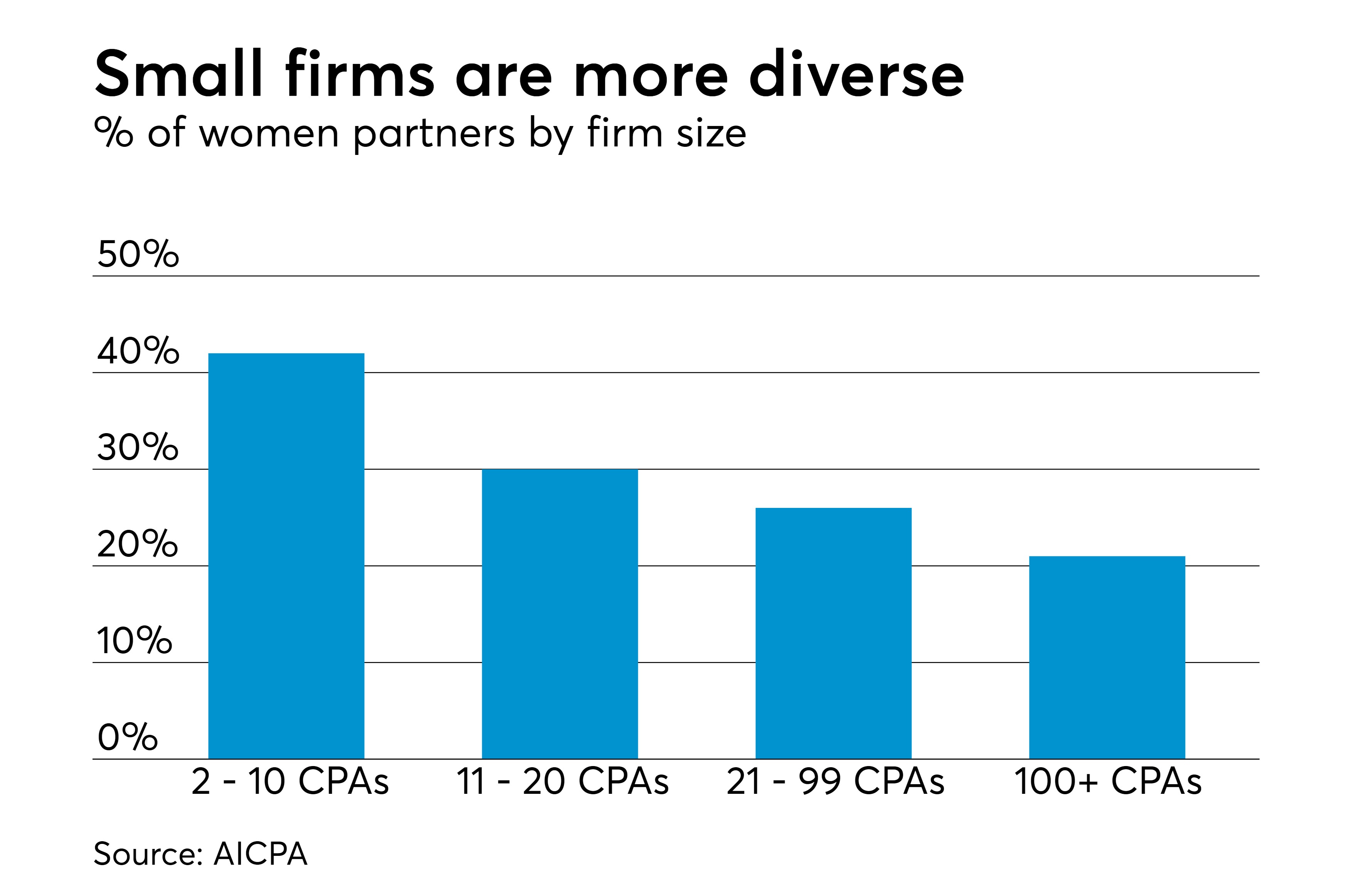We recently returned from the Winning is Everything conference in Las Vegas. In its 20th year, WiE has been a consistent opportunity for firm leadership to network, learn, grow, and to inspire one another. Over the years, some of our subject matter has evolved and advanced, and some topics remain and continue to perplex.
Take diversity and inclusion.
When WiE began, it was dominated by an older white-male contingency. Today, the conference is more diverse, with women and people of color at every age and level both participating and presenting. Yet it’s never more apparent to me that the strides we profess to have made are not at the pace a progressive industry like ours should be boasting about.
Closing the gap
Over the years, firms have gotten better at developing professional paths for women to ascend the proverbial corporate ladder and creating flexible, working-mother-friendly cultures. But this has still not led to a culture of complete equality. While more than 60 percent of accountants are women, only 24 percent of partners are women. And in most firms, these statistics are far lower. You can count the women managing partners in the Top 100 Firms on one hand
Why should we keep investing in gender equality? For one, the investment in women continues to advance not only these professionals, but brings a direct impact to a firm’s bottom line. Among the evidence, a study by Gallup linked gender diversity in corporations with positive business metrics such as profitability, productivity, and high employee retention. And a McKinsey study found that companies performing in the top 25 percent for gender diversity were 15 percent more likely to see financial returns above their respective national industry medians. Harvard Business Review concluded that going from having no women in corporate leadership (the CEO, the board, and other C-suite positions) to a 30 percent female share is associated with a one-percentage-point increase in net margin — which translates to a 15 percent increase in profitability for a typical company.
The bottom line, though, is that when you hire people, you want them to stick around and excel fully. That only benefits you and your firm, so investing in measurable diversity and inclusion strategies has real ROI. And not having any DI investment causes firms to lose time, money and positive culture.
The case for DI
When it comes to people of color, however, our industry still lags. While many firms advocate that they promote diversity and inclusion, few firms have a formal, implementable strategy to affect long-term change.
Successful diversity and inclusion means that firms must create a diverse workplace and a culture of inclusion. To be successful, as leaders, we must attend to both.
Those that do it well instill DI unapologetically in their firms and provide accountability from the top. They model how they look after their communities, clients, and consumers. Employees who look like their mentors and coworkers and customers are more likely to provide a platform on which they can grow and succeed. If you consider that by the year 2040, Caucasian-Americans will be a minority, reflecting the communities in which we do business is going to be very different. Consider what that may look like for your firm. Our profession is already struggling to acquire and retain the requisite talent. It’s time we got creative about finding great talent that looks and feels different than the status quo.
A decade ago, a study led by the late sociologist Cedric Herring confirmed that workplace diversity is among the most important predictors of a business’ sales revenue, customer numbers and profitability. In his findings he asserted that when present, racial and gender diversity create profitability at considerable levels: “A 1 percent increase in diversity can lead to as much as a 9 percent increase in performance.”
A bigger investment in people and relationships is critical to developing strong firms where people want to work. Consider developing alliances with organizations like the National Association of Black Accountants. Contact your local colleges, the ones where you recruit, and ask about their minority clubs. Seek professional organizations that support cultures and form relationships.
Good for business
Is DI a line in a proposal or a page on your website, or is it more? Every firm has an element of lip service, but very few have gone to the degree of changing the actual behavior of the firm. Not only to attract and retain diverse employees, but to foster a culture that welcomes and promotes the inclusion of different backgrounds and experiences within the organization. Most firms believe they do this, but their results tell another story.
As you embark on this new year, on the cusp of another tax season, consider this: Companies in the top quartile for racial and ethnic diversity are 35 percent more likely, and companies with gender diversity are 15 percent more likely, to have financial returns above their respective national industry medians. Diversity can boost innovation, productivity, retention, and performance.
The bottom line
An investment in diversity and inclusion pays off! Employees feel more welcome and confident to do their jobs. Clients and communities feel better represented. And study after study confirms that companies with strong diversity and inclusion perform better financially. Are you prepared to compete? How do you know?